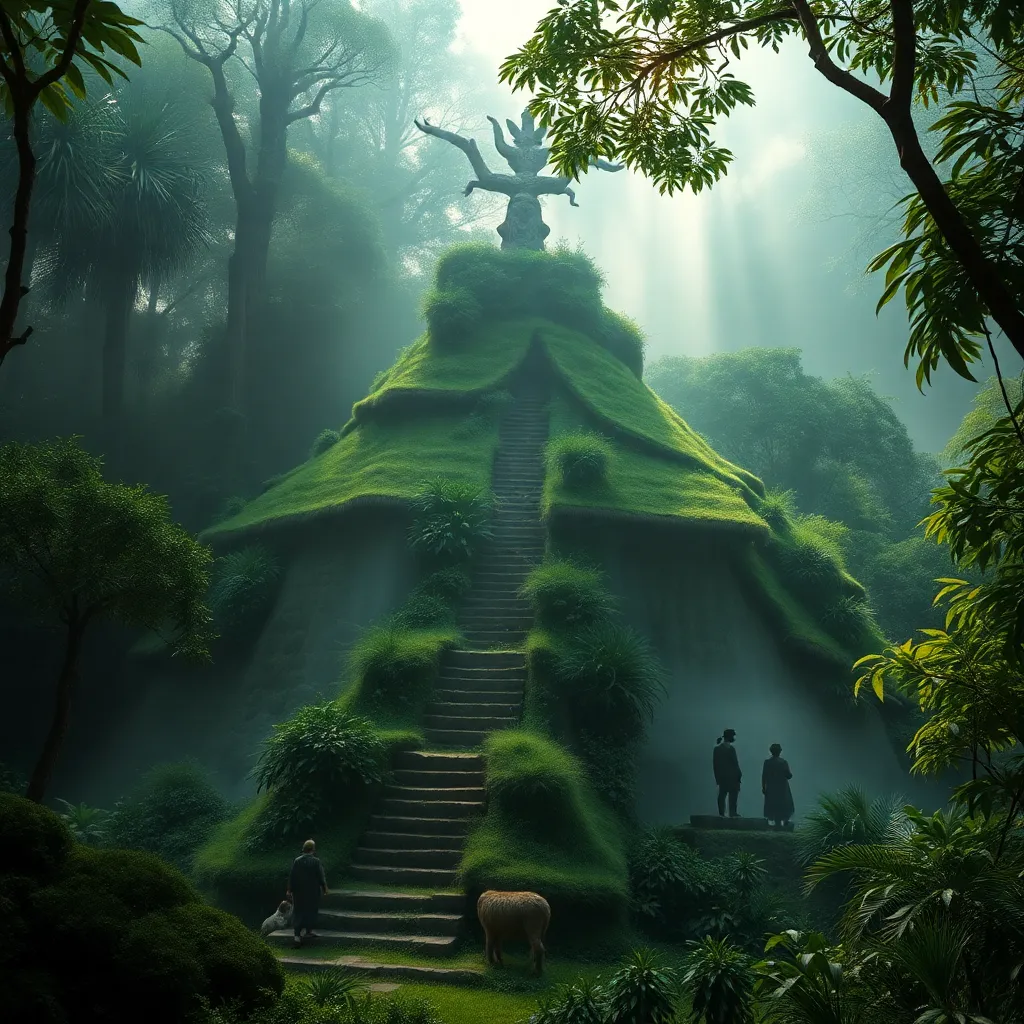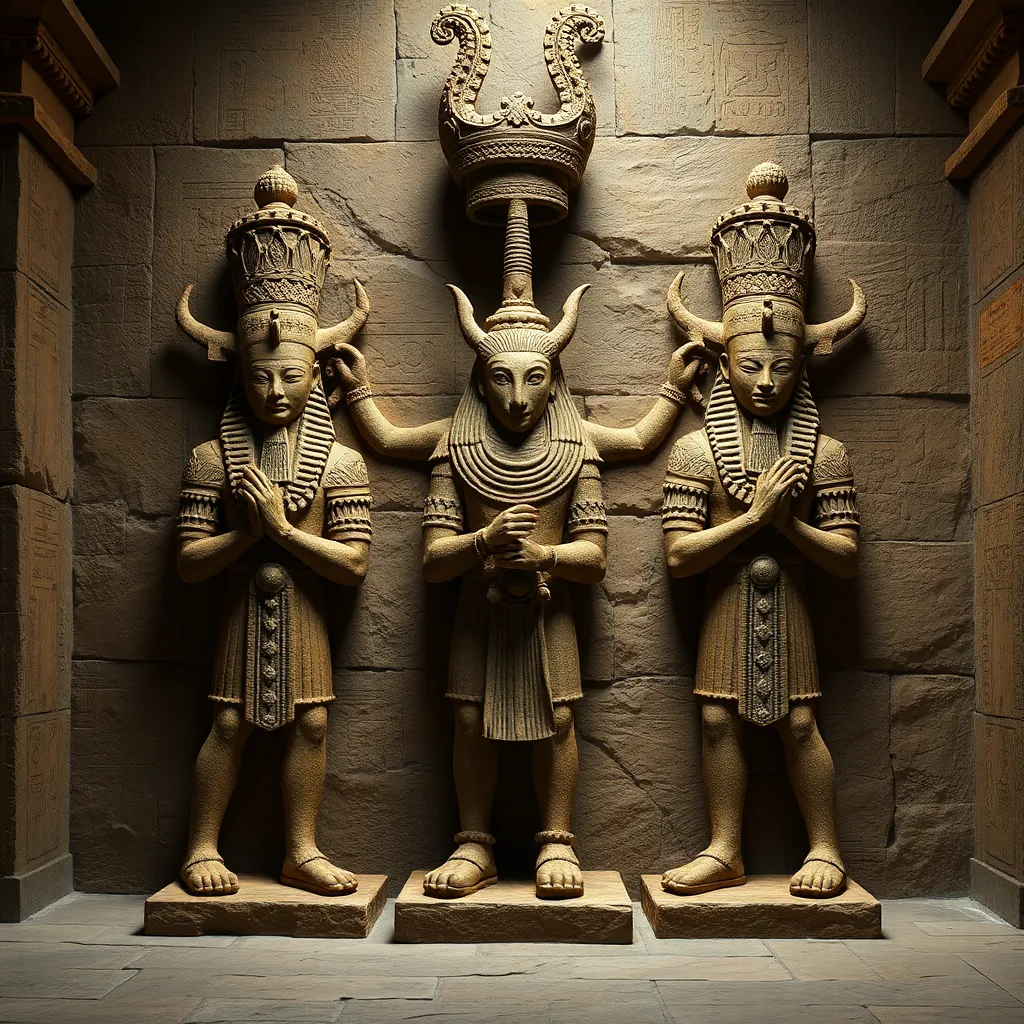Itzamná and the Maya’s Relationship with Nature: A Harmony of Creation
I. Introduction
In the rich tapestry of Maya cosmology, Itzamná stands as a central deity revered in various aspects of life. Known as the god of creation, Itzamná embodies the intricate relationship between the Maya people and the natural world. The importance of nature in Maya culture and spirituality cannot be overstated, as it serves as the foundation for their beliefs, practices, and daily existence. This article explores the profound harmony between Itzamná and the natural world, illuminating how this relationship shapes the Maya worldview and their interactions with the environment.
II. Itzamná: The God of Creation
Itzamná, often depicted as an elderly man with a serpent headdress, holds a significant place in the pantheon of Maya deities. His attributes encompass wisdom, knowledge, and the power of creation. As a god of the sky, Itzamná is believed to govern the cosmos, influencing both celestial and terrestrial realms.
In the Maya creation myth, Itzamná plays a pivotal role in shaping the world and its inhabitants. The Popol Vuh, a sacred text of the Maya, recounts how he, along with other gods, created humanity from maize, emphasizing the deep connection between the people and the earth. This myth underscores the symbolism of Itzamná as a nurturing force, akin to the natural elements that sustain life.
Itzamná’s association with natural elements is profound; he is often linked to the sun, rain, and fertility of the land, serving as a reminder of the cyclical nature of life and the importance of respecting these forces.
III. The Maya Cosmology: Interconnectedness of Life
The Maya worldview is deeply rooted in the concept of interconnectedness. They perceive life as a web where every being, whether human, animal, or plant, is interconnected and dependent on one another. This cosmological belief fosters a sense of responsibility towards the environment.
Balance and harmony within nature are central to Maya spirituality. The cyclical patterns of life, such as the changing seasons and agricultural cycles, reflect the need for equilibrium. Deities, including Itzamná, are seen as guardians of this balance, ensuring that the natural world remains in harmony.
- Balance: The Maya believe that maintaining balance in nature is essential for survival.
- Deities: Various deities are invoked to maintain ecological equilibrium, each representing different aspects of nature.
IV. Nature as a Living Entity in Maya Beliefs
To the Maya, nature is not merely a backdrop for human activity; it is a living entity imbued with spirit and significance. This understanding is rooted in animism, where natural elements are believed to possess souls or spirits.
Sacred sites and natural landmarks hold immense importance in Maya spirituality. Mountains, rivers, and caves are often seen as sacred spaces where the divine intersects with the earthly realm. Rituals and practices are conducted to honor these places, reinforcing the belief that humans must coexist respectfully with nature.
- Sacred Sites: Locations such as cenotes and mountains are integral to spiritual life.
- Rituals: Offerings and ceremonies are performed to appease nature spirits.
V. Agricultural Practices and Sustainability
The Maya have developed sophisticated agricultural techniques that reflect their deep understanding of the environment. Traditional practices such as slash-and-burn agriculture, milpas (shifting cultivation), and agroforestry demonstrate a sustainable relationship with the land.
Itzamná’s influence on agricultural cycles is significant; he is invoked for fertility and bountiful harvests. This divine connection underscores the importance of agriculture in Maya culture, as it is both a means of sustenance and a spiritual practice.
Modern environmentalism can learn much from the Maya’s sustainable practices, which prioritize ecological balance and respect for the land. Key lessons include:
- Utilizing indigenous knowledge for sustainable land management.
- Implementing crop rotation and biodiversity to maintain soil health.
- Recognizing the importance of seasonal cycles in agricultural planning.
VI. The Role of Nature in Maya Art and Symbolism
The influence of Itzamná and nature is vividly depicted in Maya art and symbolism. Artistic representations often include intricate carvings and murals that showcase natural elements such as plants, animals, and celestial bodies.
Flora and fauna are integral to Maya mythology, serving as symbols of life, fertility, and the interconnectedness of all beings. For example, the jaguar is a powerful symbol of strength and the underworld, while maize is revered as the sustainer of life.
Moreover, the significance of nature extends to Maya architectural designs, which often incorporate natural landscapes and align with celestial events, reflecting their reverence for the cosmos.
VII. Contemporary Reflections on Maya Environmentalism
In recent years, there has been a revival of ancient practices within modern Maya communities as they seek to reconnect with their cultural heritage. This resurgence emphasizes the importance of traditional ecological knowledge in addressing contemporary environmental challenges.
However, the impact of climate change poses significant threats to Maya cultural heritage and their traditional ways of life. As natural resources diminish and weather patterns become increasingly erratic, the need for sustainable practices is more pressing than ever.
The lessons from Maya cosmology can provide valuable insights for addressing contemporary environmental issues, including:
- Emphasizing community-based resource management.
- Integrating traditional knowledge with modern scientific approaches.
- Promoting biodiversity and conservation efforts.
VIII. Conclusion
Itzamná’s significance in the Maya relationship with nature is profound, representing a harmonious connection that transcends mere survival. The enduring legacy of Maya beliefs fosters a deep respect for the environment, emphasizing the importance of balance and interconnectedness.
As we confront the environmental challenges of the modern world, embracing the ancient wisdom of the Maya offers a pathway towards a sustainable future. By learning from their practices and philosophies, we can cultivate a more harmonious relationship with the natural world, ensuring that both humanity and nature thrive.




